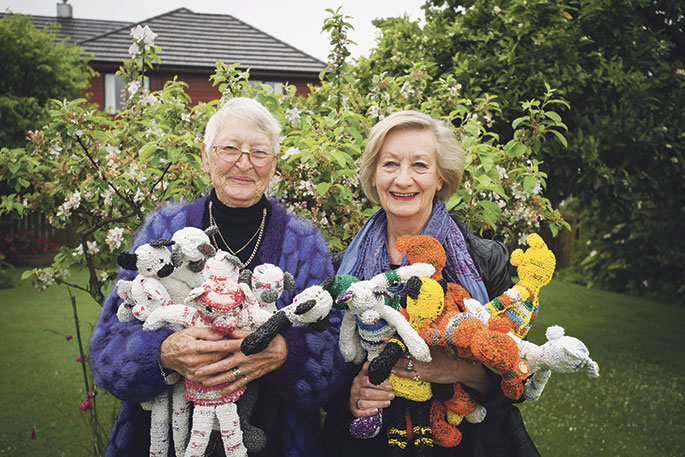It's a trivial little icon, but it's flexing muscle to help save the planet.
It's the teddy bear, a teddy bear made of plastic bags, knitted together from broken down shopping bags. 'You can't imagine the power such a little thing can have,” says contemporary artist Maggie Johnston. 'And it's positive power.”
Teddy bears and toxic waste – an intriguing juxtaposition.
'People get up close to them and realise they're not soft warm and fluffy.” No, they're plastic. 'The jarring recognition happens but it's done in a soft endearing way and people don't feel threatened. They don't feel someone's taking a dig at them for not doing this or that. The plastic teddy attracts them to the idea of not using plastic, and they feel positive about not using it.”
It's estimated we use 1.6 billion single-use plastic bags each year. About 40,000 are sent to a landfill each hour.
So this is an easy to embrace stance against plastic bags - no placards, no protests, no shouting, no marches.
Down 14th Avenue, pensioner Jenny Galey is knitting her seventh plastic teddy bear from her own shopping bags. 'One teddy bear takes 20 plastic bags and a-day-and-a-half's knitting. I have time on my hands and this is one way of making a difference.”
Her difference to date is 140 plastic bags not going to landfill, where they don't break down and blow around in the wind polluting the sea and waterways as well as maiming and killing wildlife.
Maggie Johnston, with a masters in fine art, began her campaign of passive resistance 18 months ago.
'If you look back through the centuries, archaeologists have discovered a lot about our culture through art and it's still happening today. Art is a response to what is happening in the environment at the time.” And the unnecessary use of plastic bags is happening at this time.
'I started using womanly skills to make functional bags out of plastic bags, getting other women to join me knitting and talking about why we were using plastic bags and shouldn't be using plastic bags. There was zero appeal, and it didn't get any traction.”
So she had to rethink her concept of reusing something to make a statement, in the hope of stopping companies - and people - using plastic bags. ”Teddy bears sprang to mind – something alluring and attractive so people would want to look at it and discover it's not warm and fluffy, that it's plastic.”
Maggie's been artist in residence for the arts festival in Nelson. 'I have been down the park knitting and displaying bears, educating people and getting them on side.” A passive protest, not causing any animosity, just creating awareness. It's a social sculpture – getting people in the community talking and working together over a social issue.
'If that's political, then the plastic bears are very political plastic bears.”
Ultimately there will be a big exhibition with the gallery floor covered by plastic bears, including the ones knitted here in Tauranga by Jenny and her Mount Maunganui mate Pam Young. 'The huge number of bears will be overwhelming and I will sell them so people will have them for however long they want.”
By then, she hopes science and research will have caught up and there will be some viable method of reusing the plastic in the plastic teddy bears.
'The other view is by the time all that happens, the groundswell of pressure is sufficient to have the bag banned. That's my hope, then my bears will be collectors' items worth an absolute squillion. That's the philosophy. It's great.”
The contemporary artist has never been a teddy bear person. 'But the plastic bag teddy bears are creating such an interest around the world and around New Zealand – they're getting traction and doing everything I wanted and more.” Bears versus bags, and the bears winning.

